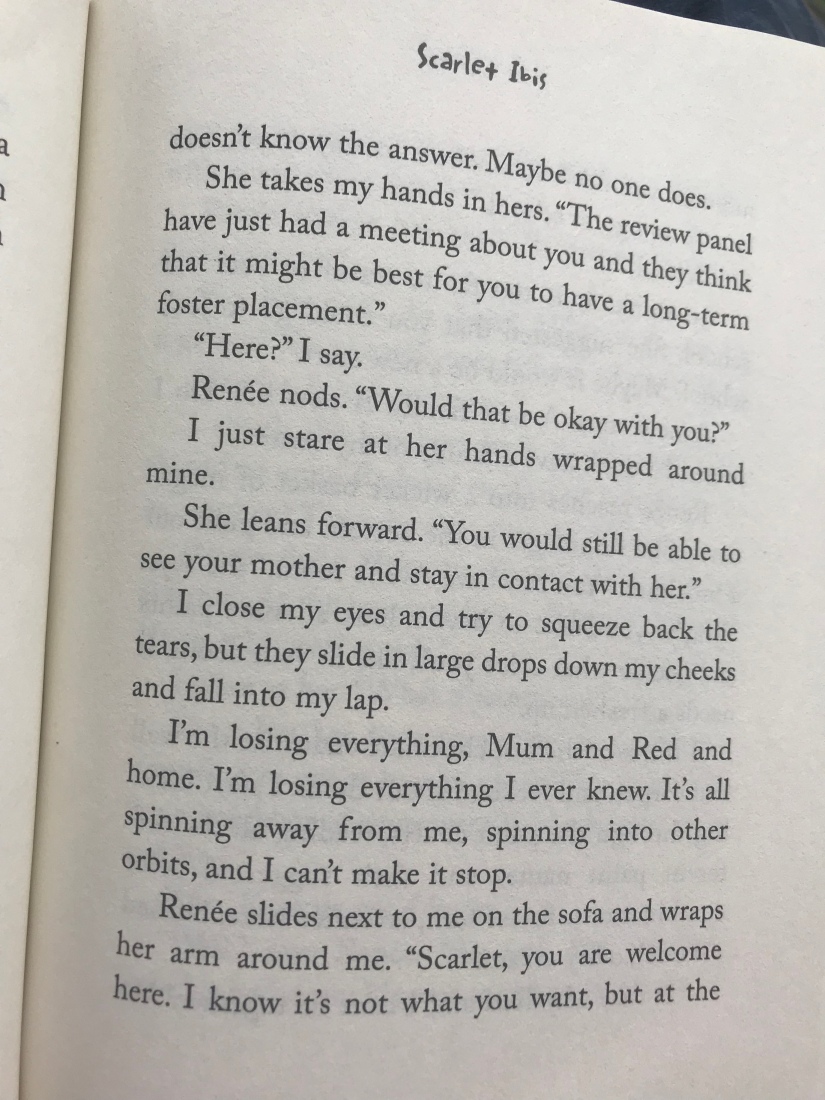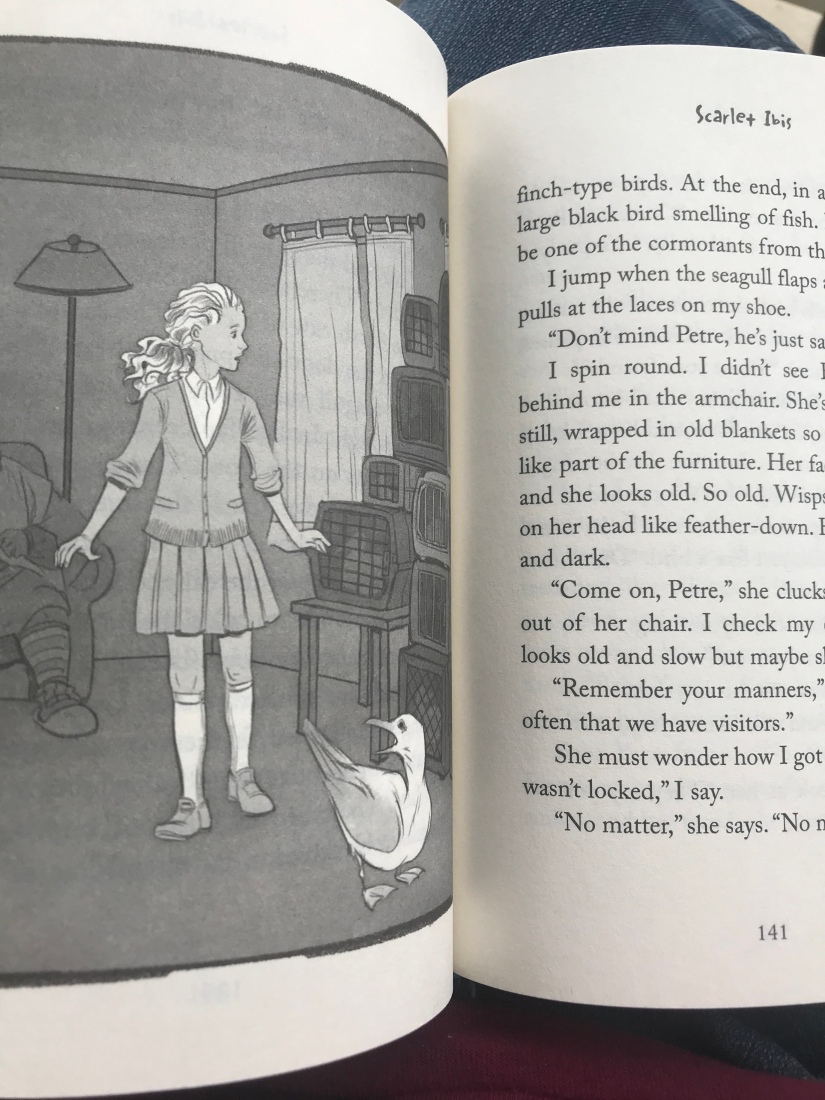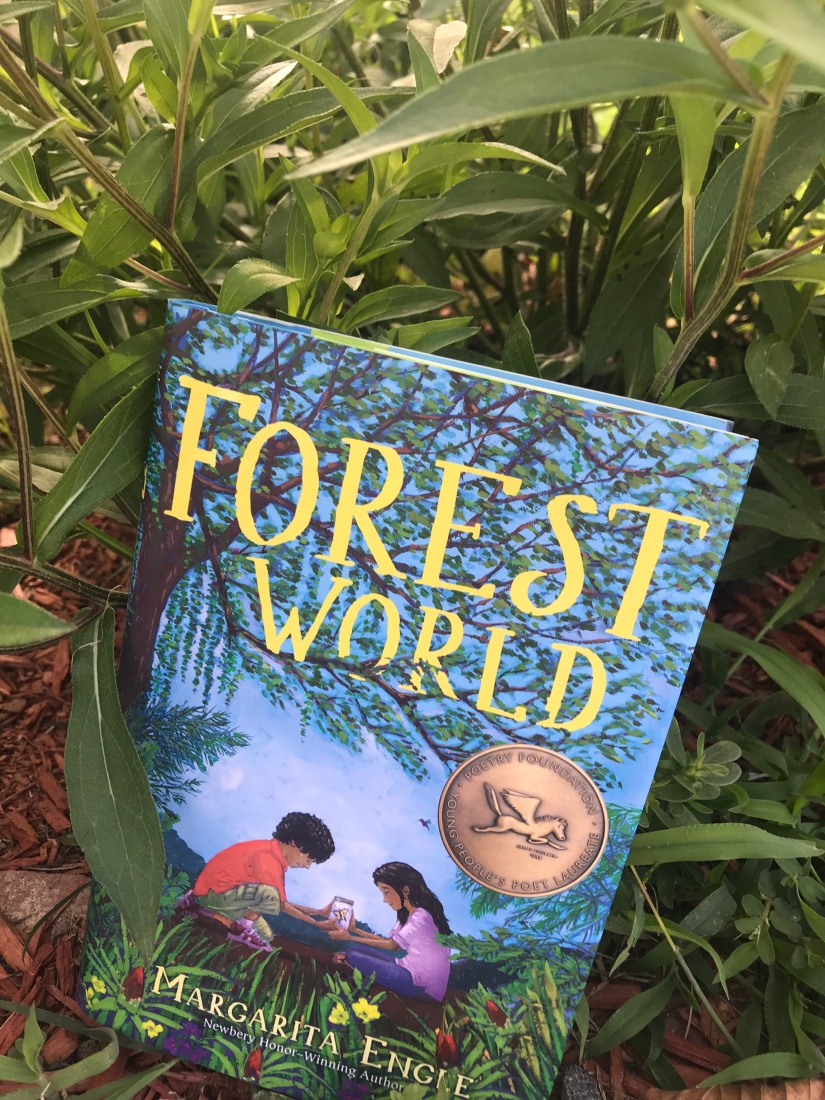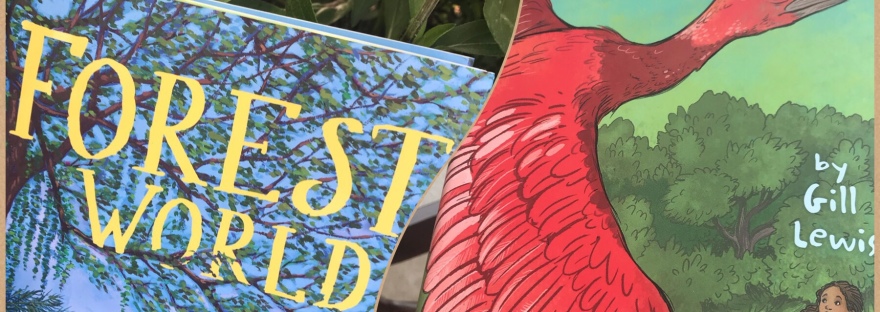It’s become a bit of a cliche for children’s or YA authors to kill off parents or have their characters search for unknown parents. It’s an easy trope to use to center a story’s actions on a child’s choices. But for those young people who are forced to be separated from their families, this voice may not resonate. And in our current times, frankly, won’t resonate with the world-aware teen. Two such books that discuss this topic for middle graders and teens are Scarlet Ibis, by Gill Lewis and Forest World, by Margarita Engle.
Scarlet Ibis
At 12 years old, Scarlet cares for her autistic brother and severely depressed mother. This tenuous situation leads to her and her brother to foster care, a situation that separates them all and initiates Scarlet’s attempt to reunite them. The writing is done from Scarlet’s perspective, guiding the reader through an empathetic journey that makes her actions and “acting out” understandable and logical. This unique and much needed perspective is refreshing and a true gift from the author for anyone, especially those with foster children in their lives.




Forest World
Free verse poetry is an intriguing and appropriate way to unfold this novel of a family separated and reunited across the Florida-Cuba divide. Told through alternating poems in the voices siblings, Luza and Edver, we see the same family’s story from two perspectives. In addition to the separated family we see them living their lives and experiencing all the teenage experiences in this context. It’s truly a unique and yet universal book.





